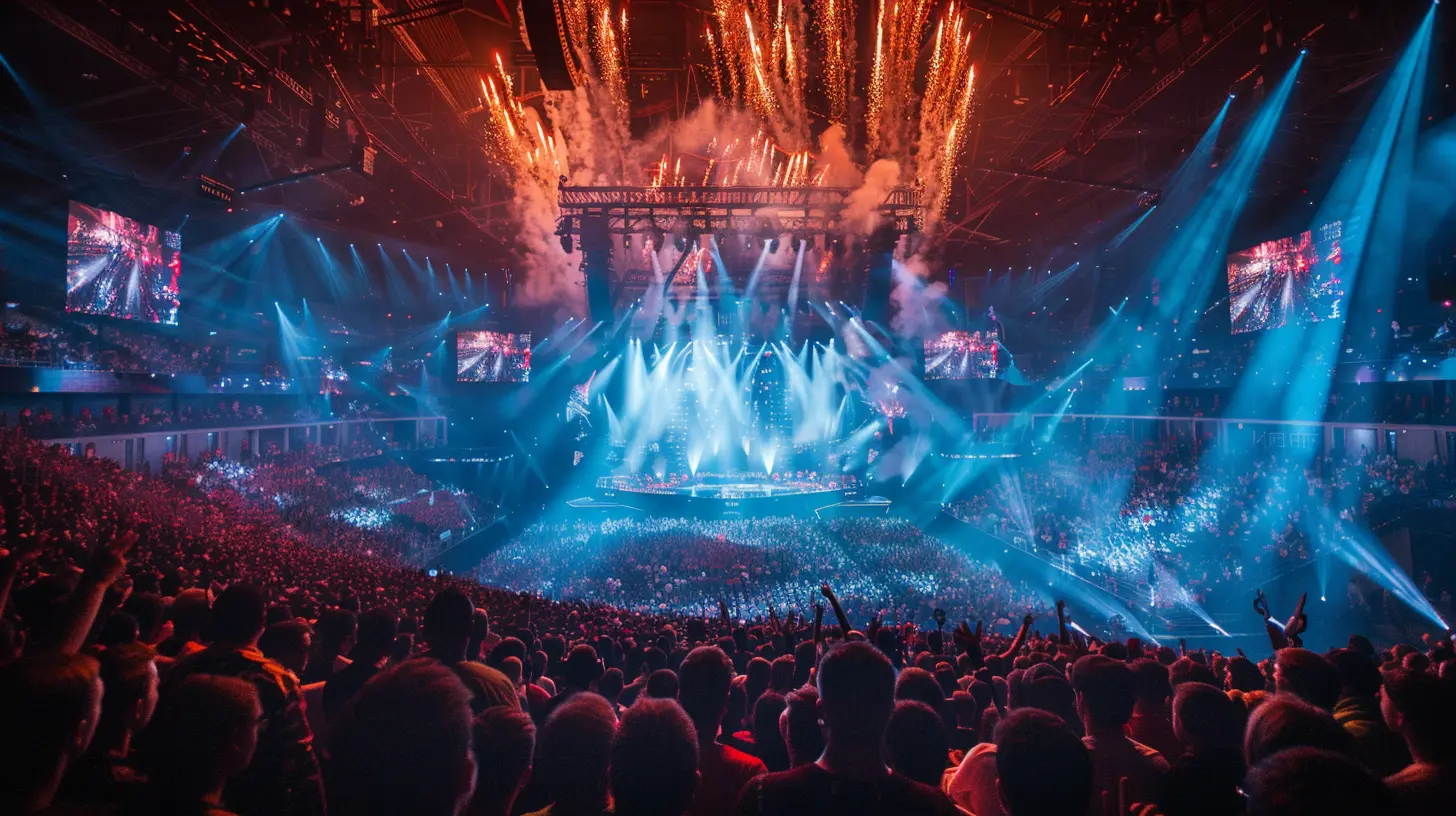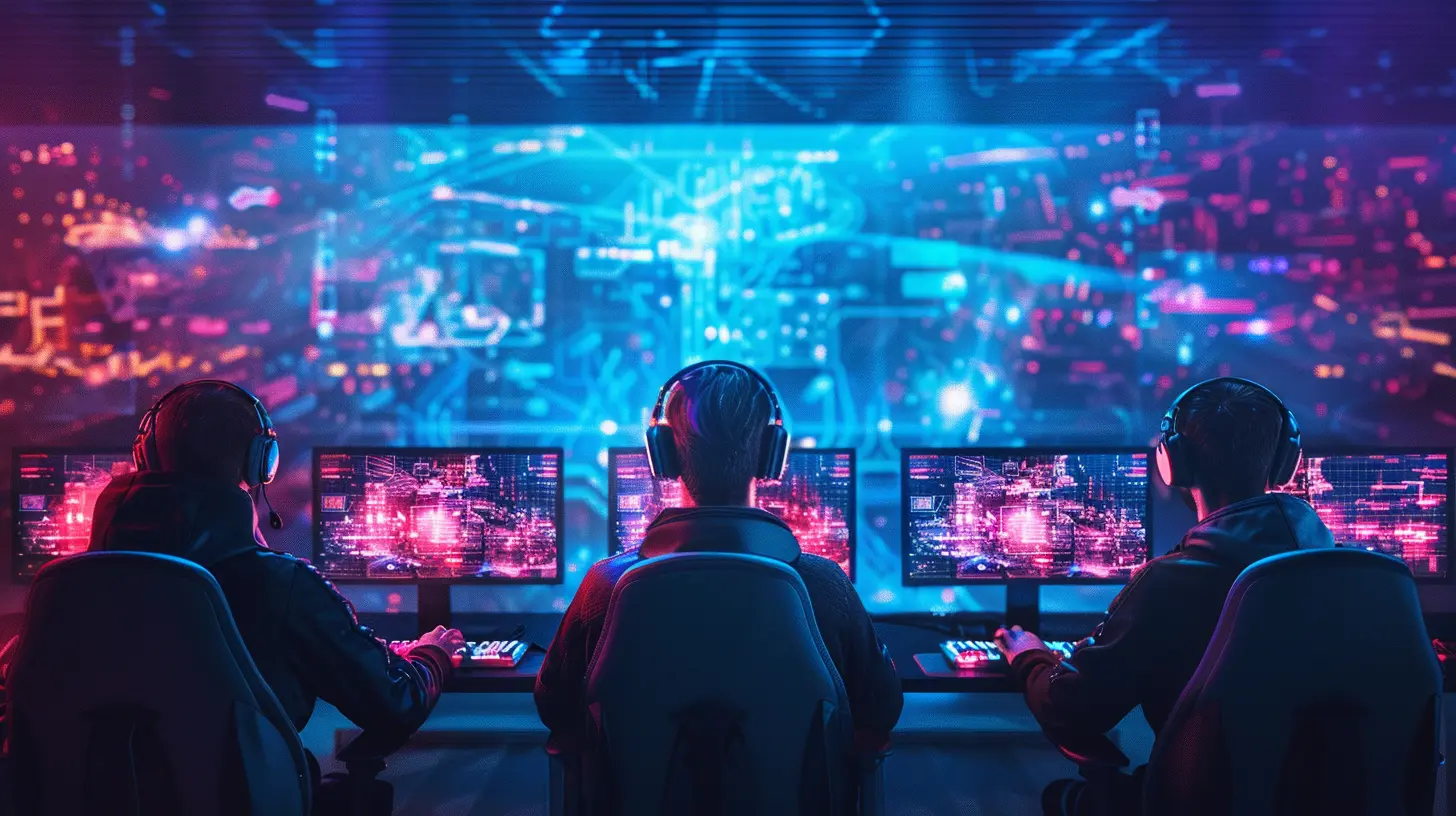How Technology is Driving Innovation in Esports Team Operations
12 September 2025
Esports. A dazzling collision of precision, strategy, and adrenaline, all wrapped up in a digital arena. Over the past decade, it’s transformed into a global phenomenon, pulling in fans and players alike with its gripping narratives and high stakes. But what happens behind the scenes? What fuels the magic that enables teams to go from mere amateurs to legends in the making? The answer lies in one word: technology. From data analytics to virtual reality, technology has revolutionized how esports teams operate, train, and succeed.
Let’s dive deep into how technology is reshaping the fabric of this fast-evolving world. And hey, don’t worry—this isn’t going to be one of those dry, textbook-style reads. Let’s keep it lively and engaging, shall we?
The Digital Backbone of Esports Teams
If esports were a human body, technology would undoubtedly be its backbone. You know how traditional athletes watch replays of their games to strategize better? Esports teams do the same, but on steroids (not literally, of course).Data Analytics: Numbers Don’t Lie
Imagine being able to dissect every single click, move, and decision a player makes during a game. With data analytics, that’s not just possible—it’s the norm. Coaches and analysts are now equipped with advanced software to track performance metrics like reaction time, accuracy, and decision-making speed.This isn’t just number-crunching for the fun of it. Picture this: a coach notices a player consistently underperforming on mid-lane in League of Legends. With analytics, they can pinpoint exactly why—it could be poor positioning, slow cooldown management, or even stress-induced errors during clutch moments. Armed with this insight, the player gets targeted training sessions to fix their weak spots. It’s like having a crystal ball, only way nerdier.
Cloud Gaming: Training Without Limits
Gone are the days of lugging around heavy gaming rigs to bootcamps. Thanks to cloud gaming platforms like NVIDIA GeForce Now and Google Stadia, players can train anywhere with just a decent internet connection. The game isn’t stored locally; instead, it’s streamed directly, meaning everyone can access the same high-quality resources regardless of hardware limitations.It’s like the esports equivalent of having a gym that follows you wherever you go. Flexibility? Check. Cost-efficiency? Double check.
Communication Tools: Building Synergy Like a Well-Oiled Machine
Esports is all about teamwork. And you know what happens when communication breaks down mid-game? Chaos. Utter chaos. But technology has swooped in to save the day.Real-Time Voice Comms: No Room for Delay
Whether it’s Discord, TeamSpeak, or Mumble, real-time voice communication apps have become the unsung heroes of esports. With razor-sharp accuracy and almost zero latency, players can call out enemy positions, coordinate tactics, and pull off those game-winning plays. It’s like having a sixth sense shared among your team.But here’s where it gets cool: AI-powered noise-cancellation software like Krisp is now filtering out background noise. So, even if someone’s dog decides to bark during a crucial moment, the team stays laser-focused.
AI and Machine Learning: The Silent Coaches
Artificial Intelligence isn’t just a buzzword; it’s literally transforming how esports teams plan their strategies and refine their gameplay. Think of it as having a coach who never sleeps and learns from every match they observe.Opponent Analysis: Outsmarting the Competition
AI tools can analyze opponents’ past games to detect patterns, weaknesses, and tendencies. For example, in games like Dota 2, an AI might notice that a specific team struggles against early aggression. Knowing this, your team can draft heroes and strategies designed to exploit that weakness. Sneaky? Maybe. Effective? Absolutely.Personalized Training: No One-Size-Fits-All
Machine learning algorithms can now create personalized training regimens. Let’s say a player struggles with aim accuracy in Valorant. AI tools like Aim Lab use machine learning to design drills that specifically target their weak points. Over time, these sessions adapt and evolve, ensuring constant improvement without burning players out.
Virtual Reality and Augmented Reality: Training Stepping into the Future
If you thought VR and AR were just for casual gaming, think again. These technologies are carving out a niche in the professional esports world as well.High-Stakes Simulation
Imagine being able to relive a high-stakes game in a fully immersive virtual environment. VR allows players to revisit their matches, experiencing them from entirely new perspectives. It’s one thing to watch a replay, but it’s a whole different ballgame to "be there" again, spotting mistakes you might’ve missed on a 2D screen.AR, on the other hand, is helping analysts interact with game data in dynamic ways. Think holographic dashboards displaying heatmaps, individual player stats, and even simulated enemy movements—all in real-time.
Wearable Tech: Monitoring and Optimizing Performance
The physical toll of esports is often underestimated. Long hours of gaming can lead to fatigue, stress, and even repetitive strain injuries. Enter wearable tech.Biosensors: Keeping Players in Top Form
Biosensors like heart rate monitors and EEG headsets are being used to track physiological data during matches. If a player’s stress levels spike during clutch moments, coaches can develop strategies to help them stay cool under pressure—maybe some breathing exercises or mindfulness techniques.Wearable Gloves: Preventing Injuries
Gaming gloves with built-in sensors are helping players avoid conditions like carpal tunnel syndrome. They track hand movements and provide real-time feedback, ensuring players don’t strain their muscles. It’s like having a personal trainer for your hands.Automation and Smart Scheduling: Streamlining Operations
Esports teams are often juggling scrims, tournaments, content creation, and brand obligations. It’s a lot, and things can easily slip through the cracks. Thankfully, automation tools are stepping in to manage the madness.Smart Calendars and Workflow Apps
Tools like Notion, Trello, and Google Calendar have become staples for esports managers. With smart scheduling, teams can visualize their workload, set reminders for crucial deadlines, and even automate routine tasks like sending match replays for analysis.Fan Engagement: The Tech Behind the Glory
Let’s not forget the lifeblood of esports—fans. Without them, none of this would even matter. Technology has created new ways to bridge the gap between teams and their supporters.Interactive Streams and Social Media
Platforms like Twitch and YouTube Gaming are constantly evolving, adding features like live polls, chat-based mini-games, and even crowd-controlled gameplay. Fans are no longer just spectators; they’re active participants.Social media tools like Hootsuite help esports teams manage their digital presence, ensuring every fan interaction is smooth and meaningful.
The Flip Side of the Coin
Of course, it’s not all sunshine and rainbow headshots. The heavy reliance on technology comes with its own set of challenges. From cybersecurity risks (hello, hackers!) to the risk of over-relying on data and losing the 'human touch,' it’s a delicate balancing act.However, as technology continues to evolve, so too will the methods to counteract these issues. It's an ongoing game of adaptation—a dance where innovation always seems to take the lead.
Conclusion: A Future Bright with Possibilities
Esports is no longer just about raw talent. It’s a complex symphony where technology plays the conductor, guiding teams toward success. From data analytics and AI-driven strategies to groundbreaking wearables and immersive VR experiences, the innovations shaping esports team operations are as thrilling as a last-minute victory in overtime.And here’s the best part: we’re only just scratching the surface. As technology continues to evolve, who knows what the future holds for this electrifying industry? The possibilities are endless, and honestly, isn’t that what makes esports—and technology—so darn exciting?
all images in this post were generated using AI tools
Category:
Esports TeamsAuthor:

Lucy Ross
Discussion
rate this article
1 comments
Valeria Phillips
Great read! It’s exciting to see how technology is reshaping esports team operations. From data analytics to virtual training, the future looks bright for gamers and fans alike. Let’s embrace these innovations and cheer on our favorite teams as they level up their game! 🎮✨
September 19, 2025 at 3:49 PM

Lucy Ross
Thank you! I'm thrilled you enjoyed the article. Exciting times ahead for esports with these technological advancements! 🎮✨


